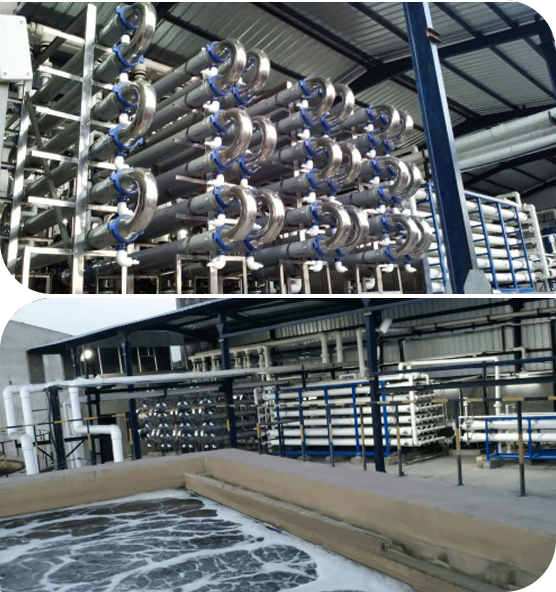
Waterman Engineers Australia is among the foremost suppliers of Zero Liquid Discharge procedure. A ZLD procedure is a therapy procedure that is utilized to remove all the liquid squander from the program. The aim of ZLD water treatment is to lower wastewater economically and develop potable drinking water which is match for normal use. Zero discharge procedure is a sophisticated remedy method that comprises ultrafiltration, reverse osmosis, evaporation and fractional electro deionization. And we've been a properly-identified provider of ZLD programs.
In many Industries, which include electricity, oil & gas, chemical compounds, mining and Other individuals, a great deal of wastewater is produced that should be managed. Conventionally, this discharge of wastewater is completed via a plant outfall to your surface drinking water body like an evaporation pond, or sometimes deep well injected. These procedures lead to a lot of environmental concerns by the public in lots of locations of the planet, as drinking water is a scarce source and its management really should be monitored. These issues have resulted while in the institution of ZLD procedures by many industries to lessen their environmental footprint and increase sustainability. And, Waterman Engineers Australia are most effective ZLD suppliers you will discover for This technique.
Houses OF ZERO LIQUID DISCHARGE Process
The Houses of the Zero Liquid Discharge system can vary dependant upon the unique design and engineering employed. On the other hand, some prevalent Houses of ZLD devices involve:
H2o Conservation: Considered one of the first aims of ZLD programs is usually to conserve water by reducing the discharge of liquid waste in to the surroundings.
Higher H2o Purity: ZLD devices are built to make large-high quality h2o that is definitely cost-free from impurities and contaminants, which makes them well suited for use in lots of industrial procedures.
Flexibility: ZLD methods are often intended to accommodate a wide selection of enter liquid streams, which makes them functional and appropriate for use in various industries.
Innovative Wastewater Therapy: Zero liquid discharge units use Innovative wastewater treatment techniques to remove impurities and contaminants through the effluent, producing substantial-quality drinking water.
Squander Reduction: ZLD systems aid cut down waste by lowering the quantity of liquid squander that needs to be disposed of and by generating a concentrated, stable squander material which can be safely and securely disposed of.
Energy Efficiency: ZLD techniques is often Electrical power-intensive as a result of substantial Electricity requirements of evaporation along with other wastewater treatment method processes. On the other hand, advancements in technological know-how are making Zero liquid discharge methods much more Power-effective and cost-efficient.
Waterman Engineers Australia manufactures Zero Liquid Discharge (ZLD) methods made to remove all liquid squander, aiming to make potable drinking water and decrease environmental effect. Their ZLD methods usually include ultrafiltration, reverse osmosis, evaporation, and fractional electro deionization. Vital systems employed are Falling Movie Brine Concentrators, Forced Circulation Crystallizer, and others, which has a two-action technique of pre-focus and evaporation/crystallization to Get well and reuse water. These devices are adaptable to diverse industries, emphasizing water conservation, significant drinking water purity, squander reduction, and Vitality performance. Complex Zld System Manufacturer Zero Liquid Discharge System specifications are diversified and customizable, thinking about factors like drinking water resource, circulation rate, and feed drinking water high-quality.
The need for Zero Liquid Discharge (ZLD) devices arises through the requirement to address environmental problems associated with drinking water scarcity and air pollution. In industries like energy, oil & gasoline, and mining, vast amounts of wastewater are produced. Customarily, this wastewater is discharged into bodies of water, leading to air pollution and depleting clean up water assets. ZLD devices purpose to minimize these impacts by treating and recycling wastewater in the economic process, thereby conserving water, lowering waste, and advertising and marketing sustainability.
When thinking about the technological specifications of a Zero Liquid Discharge (ZLD) method, crucial factors to center on involve the h2o resource it will eventually address, the procedure's move rate, the standard of feed h2o, the phases of cure included, the recovery price of water, methods for focus disposal, products of development, running situations, and method automation and Manage. These factors make sure the technique's efficiency, durability, and performance in dealing with and recycling industrial wastewater.
Zero Liquid Discharge (ZLD) plants give Added benefits for example water conservation, squander reduction, and pollution avoidance, contributing to environmental sustainability. They're relevant in industries like electrical power technology, oil and gasoline, chemicals, and mining, wherever they help in running industrial wastewater properly, decreasing the ecological footprint, and complying with demanding environmental laws. These units are critical in areas experiencing water scarcity and for industries aiming to boost their sustainability and operational performance.
FAQs for any Zero Liquid Discharge (ZLD) procedure usually handle its operational principles, Value-success, upkeep necessities, environmental influence, applicability across several industries, and regulatory compliance. These questions aid people comprehend the technique's Gains, technical demands, and suitability for their distinct wastewater administration desires.
one. Zero Liquid Discharge (ZLD) is a wastewater therapy approach built to reduce all liquid squander.
two. The procedure's factors are affected by the precise industrial system, wastewater composition, and regulatory requirements.
3. Effluent treatment crops remove pollutants from textile effluents to prevent environmental contamination.
four. Pros involve h2o conservation, air pollution reduction, and regulatory compliance.
5. The objective is to minimize environmental impact by recycling h2o and cutting down waste.
6-nine. Effluent cure vegetation are stages in wastewater treatment: Most important (Bodily separation), secondary (biological treatment), and tertiary (advanced procedure).
10. Unit functions contain filtration, sedimentation, Organic cure, and disinfection.
11. Restricting parameters are variables that have an effect on the treatment's performance, like pH and contaminant concentration.
twelve. Style considerations include things like circulation rate, effluent composition, and ideal top quality of treated drinking water.